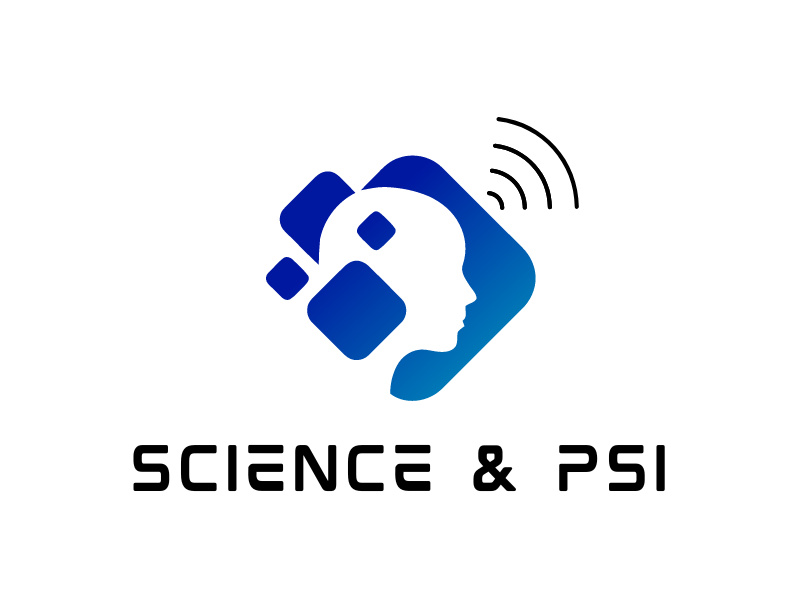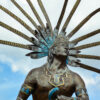Introduction
In an age of scientific materialism, the study of consciousness remains one of the greatest mysteries in both psychology and neuroscience. Yet, despite vast strides in understanding the brain, one area remains particularly elusive: the distinction between spiritual experiences and mental illness. At the forefront of this complex and often misunderstood field is Dr. Bruce Greyson, a pioneering psychiatrist and parapsychologist whose work on near-death experiences (NDEs) has offered a new lens through which to view consciousness. He served on the medical school faculty at the Universities of Michigan, Connecticut, and Virginia.
Dr. Bruce Greyson is Professor Emeritus of Psychiatry and Neurobehavioral Sciences at the UVA School of Medicine. He was a co-founder and President of the International Association for Near-Death Studies, and Editor of the Journal of Near-Death Studies. His award-winning research led him to become a Distinguished Life Fellow of the American Psychiatric Association, and to be invited by the Dalai Lama to participate in a dialogue between Western scientists and Buddhist monks in India.
Greyson’s research focuses on differentiating genuine spiritual experiences from psychotic episodes, highlighting the importance of avoiding misdiagnosis, while challenging the current paradigm of cognitive neuroscience that tends to dismiss spiritual phenomena as mere hallucinations.
This article delves into Greyson’s professional background, his key contributions to the fields of psychiatry and parapsychology, and the urgent need for psychology to adopt a more nuanced approach to understanding spiritual experiences.
Dr. Bruce Greyson’s Professional Background
 Dr. Bruce Greyson has become a prominent figure in the study of near-death experiences, spiritual phenomena, and the nature of consciousness. His career spans decades of research into what many see as fringe science, yet his scholarly rigor and empirical methods have brought a new level of legitimacy to these topics. After earning his medical degree, Greyson’s interests evolved from conventional psychiatry to the uncharted territory of human consciousness, particularly around near-death experiences. His professional home has been at the University of Virginia’s Division of Perceptual Studies (DOPS), one of the few academic institutions in the world dedicated to researching phenomena that challenge the conventional materialistic view of the mind.
Dr. Bruce Greyson has become a prominent figure in the study of near-death experiences, spiritual phenomena, and the nature of consciousness. His career spans decades of research into what many see as fringe science, yet his scholarly rigor and empirical methods have brought a new level of legitimacy to these topics. After earning his medical degree, Greyson’s interests evolved from conventional psychiatry to the uncharted territory of human consciousness, particularly around near-death experiences. His professional home has been at the University of Virginia’s Division of Perceptual Studies (DOPS), one of the few academic institutions in the world dedicated to researching phenomena that challenge the conventional materialistic view of the mind.
The development of the Greyson Scale, a widely recognized tool used to measure the intensity of near-death experiences, is one of his most significant contributions. This scale enables researchers and clinicians to systematically study NDEs, providing a scientific framework to measure these extraordinary occurrences. Greyson’s work at DOPS, along with his extensive research and publications, has earned him respect both within and outside mainstream academic circles.
Despite working in a field often dismissed by mainstream science, Dr. Greyson’s empirical approach to the study of consciousness and spiritual phenomena has made his findings difficult to ignore. His extensive academic publications, lectures, and research have laid the foundation for a growing recognition that spiritual experiences, far from being mere byproducts of mental illness, may represent profound insights into the nature of existence and the human psyche.
Areas of Expertise
Dr. Greyson’s areas of expertise span several interrelated fields. First and foremost is his work on near-death experiences, which has helped bring these experiences into the mainstream conversation about consciousness and spirituality. Greyson is also an expert in spirituality and mental health, where his research has been instrumental in differentiating spiritual experiences from psychotic episodes.
Moreover, Greyson’s research taps into the growing field of parapsychology, which includes phenomena such as telepathy, clairvoyance, and out-of-body experiences. These areas, once relegated to the fringe, are becoming subjects of legitimate scientific inquiry, thanks in part to Greyson’s efforts. His work calls into question the materialist paradigm that dominates both neuroscience and psychology, suggesting that consciousness may not be entirely brain-based.
This shift in focus has vast implications for how we understand mental health, spiritual experiences, and the very nature of human existence. Greyson’s work also has ethical implications in terms of how mental health professionals diagnose and treat individuals who report experiences that fall outside the bounds of conventional psychology.
The Importance of Differentiating Spiritual and Psychotic Experiences
The distinction between spiritual experiences and psychotic episodes is not just a matter of academic interest—it has real-world consequences for individuals who find themselves navigating the mental health system. Historically, the field of psychiatry has struggled to differentiate between transformative spiritual experiences and pathological symptoms of psychosis. Misdiagnosing a spiritual awakening as a psychotic episode can lead to unnecessary treatments, stigmatization, and even hospitalization. On the flip side, failing to recognize genuine psychosis can delay critical interventions, leading to further deterioration in mental health.
Dr. Greyson’s work emphasizes the need to differentiate these two experiences with careful precision. Psychotic episodes are often marked by delusions, hallucinations, and a break from reality, leading to significant distress and impairment. In contrast, spiritual experiences often leave individuals feeling connected, at peace, and more in tune with life, even if these experiences are difficult to explain within the framework of conventional psychology.
One of the primary markers of difference, according to Greyson, is the level of insight and control a person has over their experience. In psychosis, individuals often lose the ability to distinguish between their subjective experience and reality, while those undergoing spiritual experiences typically maintain a strong sense of self and a clear understanding of the boundaries between the mystical and the mundane. This insight allows individuals to integrate their spiritual experiences into their lives in meaningful ways, leading to personal growth and transformation rather than mental decline.

Furthermore, the emotional tone of these experiences is a key differentiator. Spiritual experiences often bring a sense of joy, peace, and transcendence, while psychotic episodes frequently involve paranoia, fear, and confusion. These emotional markers can be critical in distinguishing one from the other and ensuring that individuals receive appropriate treatment.
Implicit Bias in Psychiatry and Psychology
The historical bias in psychiatry and psychology toward spiritual experiences has deep roots. Western psychology, with its foundations in materialism and empiricism, has long been skeptical of phenomena that cannot be easily explained within its framework. This skepticism has, at times, devolved into pathologizing experiences that deviate from Western norms.
A notorious example is the disproportionate diagnosis of schizophrenia in African American men during the civil rights era of the 1960s. During this time, expressions of anger or dissent against the status quo were often labeled as signs of mental illness, reinforcing racial stereotypes and bolstering a system that marginalized non-conforming voices. Similarly, in the 1950s, homosexuality was classified as a sexual deviation, subjecting LGBTQ individuals to treatment and stigmatization. These examples illustrate how psychiatry has historically used its diagnostic power to enforce cultural norms, often at the expense of marginalized groups.
The same type of bias exists today in the field of spiritual experiences. Individuals who report mystical or religious experiences are often dismissed as delusional or hallucinating, even when these experiences bring them a profound sense of peace and connection. This bias is particularly evident in the context of parapsychological phenomena, which includes experiences like out-of-body perceptions and near-death experiences. Because these phenomena challenge the materialist assumptions that dominate Western psychology, they are often dismissed as mere brain malfunctions or symptoms of mental illness.
Dr. Greyson’s work challenges these assumptions, calling for a more open and nuanced approach to understanding spiritual experiences. Rather than automatically dismissing these experiences as pathological, Greyson argues that mental health professionals should take a more holistic approach, recognizing the transformative potential of spiritual awakenings. This shift in perspective could help reduce the stigma associated with spiritual experiences and provide individuals with the support they need to integrate these experiences into their lives in meaningful ways.
The Cognitive Neuroscience Bias
Cognitive neuroscience, with its focus on the brain as the source of all mental activity, has long held a materialist bias against spiritual experiences. When neuroscientists study spiritual experiences, they typically do so through the lens of brain activity, mapping which areas of the brain are activated during moments of transcendence. The assumption is that if a specific part of the brain lights up during a spiritual experience, then that part of the brain must be responsible for producing the experience.
Dr. Greyson challenges this reductive view of consciousness. While it is true that spiritual experiences are processed in the brain, this does not necessarily mean that they are created by the brain. Greyson uses a compelling analogy to illustrate his point: neuroimaging can show which areas of the brain are activated while someone reads an article, but this does not mean those areas of the brain are producing the words on the page. Similarly, just because certain areas of the brain are activated during a spiritual experience does not mean the brain is creating that experience. Instead, Greyson suggests that consciousness may exist independently of the brain, interacting with it during physical life but not originating within it.
This perspective is not new. Philosophers and spiritual leaders have long debated the nature of consciousness and its relationship to the body. However, Greyson’s work brings empirical evidence to this age-old question, challenging the cognitive neuroscience community to reconsider its materialist assumptions.
One of the key areas where this bias is most evident is in the study of near-death experiences. Greyson’s research has shown that individuals who have NDEs often report accurate perceptions of events that occurred while they were clinically dead, suggesting that consciousness can exist independently of the body. Yet, cognitive neuroscientists often dismiss these experiences as mere hallucinations produced by a dying brain. In doing so, they ignore the profound implications of these experiences and fail to account for the evidence that challenges their materialist worldview.
Examples of Bias in Parapsychology
Perhaps one of the most glaring examples of bias against spiritual experiences in the scientific community is the 2011 article published in Trends in Cognitive Sciences by Mobbs and Watt. The article, titled “There is nothing paranormal about near-death experiences,” attempted to explain NDEs as purely biological events, caused by brain malfunctions. The authors pointed to phenomena such as bright lights, meeting deceased relatives, or feeling a sense of peace as nothing more than neural misfiring’s.
However, as Dr. Greyson and other critics have pointed out, the authors conveniently ignored the aspects of near-death experiences that their theory could not explain, such as accurate out-of-body perceptions and encounters with deceased individuals who were not yet known to have died. In a subsequent interview, Caroline Watt admitted that they did not consider these features because they did not view them as central to NDEs, despite overwhelming evidence to the contrary.
This kind of cherry-picking of data is a clear example of the cognitive neuroscience community’s bias against spiritual experiences. By ignoring the aspects of NDEs that challenge their materialist assumptions, these scientists perpetuate a narrow view of consciousness that excludes the possibility of non-material phenomena.
The Need for a Paradigm Shift in Psychology
Given the growing body of evidence that suggests consciousness may not be entirely brain-based, there is an urgent need for the field of psychology to adopt a more open-minded approach to spiritual experiences. Dr. Greyson’s work serves as a catalyst for this paradigm shift, offering a model for how mental health professionals can approach spiritual phenomena with respect and curiosity, rather than skepticism and dismissal.
For one, psychology needs to move away from its overreliance on materialism and recognize that there may be aspects of human experience that cannot be fully explained by brain activity alone. This does not mean abandoning scientific rigor, but rather expanding the scope of inquiry to include phenomena that challenge our current understanding of consciousness.
Secondly, mental health professionals need to be trained to recognize the difference between spiritual experiences and psychotic episodes. This would involve not only a shift in diagnostic criteria but also a change in how therapists and psychiatrists approach their patients. Rather than automatically viewing spiritual experiences as signs of pathology, clinicians should learn to support individuals in integrating these experiences into their lives in healthy, constructive ways.
Finally, psychology as a field must be willing to acknowledge its biases and make a concerted effort to eliminate them. This means not only addressing the materialist bias that dominates cognitive neuroscience but also recognizing the cultural biases that have led to the pathologizing of certain groups and experiences throughout history. By embracing a more inclusive and open-minded approach, psychology can better serve individuals who are navigating the complex terrain of spiritual experiences and mental health.
Conclusion
Dr. Bruce Greyson’s work offers a vital roadmap for the future of psychology and psychiatry. By challenging the materialist assumptions that dominate the study of consciousness, Greyson opens the door to a more nuanced understanding of spiritual experiences. His research emphasizes the importance of differentiating between spiritual awakenings and psychotic episodes, helping to prevent misdiagnoses that can lead to unnecessary treatments and stigmatization. At the same time, Greyson’s work calls attention to the implicit biases that have plagued psychiatry and psychology for decades, reminding us of the dangers of using diagnosis to enforce cultural norms.
As the field of cognitive neuroscience continues to evolve, it is imperative that scientists and mental health professionals alike remain open to the possibility that consciousness may extend beyond the confines of the brain. By embracing this expanded view of consciousness, we can create a more inclusive, compassionate approach to mental health—one that recognizes the profound potential of spiritual experiences to transform lives for the better.
In the end, Dr. Greyson’s research is a call to action for the mental health field to reconsider its assumptions and embrace a more holistic view of the human mind. Only by doing so can we begin to truly understand the mysteries of consciousness and offer the best possible care to those who seek our help.
Differentiating Spiritual and Psychotic Experiences: Sometimes a Cigar Is Just a Cigar









